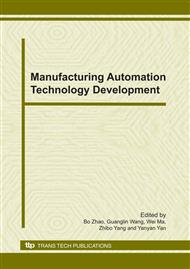p.648
p.653
p.658
p.662
p.667
p.672
p.678
p.682
p.686
Theoretical and Experimental Study on the Structure and Vibration Isolation Characteristics of a Hydraulic Engine Mount
Abstract:
Hydraulic engine mounts (HEMs) are important vibration isolation parts in vehicle powertrain mounting systems, and the structural parameters of HEMs are the main factors which determine their vibration isolation characteristics. It is of great significance to discover the influences of the structure parameters on their vibration isolation characteristics in the design and study of HEMs. Firstly, the vibration isolation characteristics of HEMs are analyzed theoretically using a simplified lumped parameter (LP) model. Secondly, the HEMs with different rubber materials, lengths and cross-sectional areas of the inertia tracks are designed and manufactured, and their frequency response characteristics are investigated by experimental and analytical methods. Finally, the influences of these structural parameters on the vibration isolation characteristics of HEMs are educed. The analytical methods and conclusions are instructive for the design and tuning of the vibration isolation characteristics of HEMs.
Info:
Periodical:
Pages:
667-671
Citation:
Online since:
December 2010
Authors:
Price:
Сopyright:
© 2011 Trans Tech Publications Ltd. All Rights Reserved
Share:
Citation:


